Creative and trick photography go hand in hand and it is something that can feel unreal, creating a kind of illusion in the viewer. Creative or trick photography is not difficult at all and in fact, if you know how to use the camera and play with the shutter speed and specific camera movements, there are a lot of creative images that you can capture. These are special methods that you would not otherwise use in your day-to-day photography.
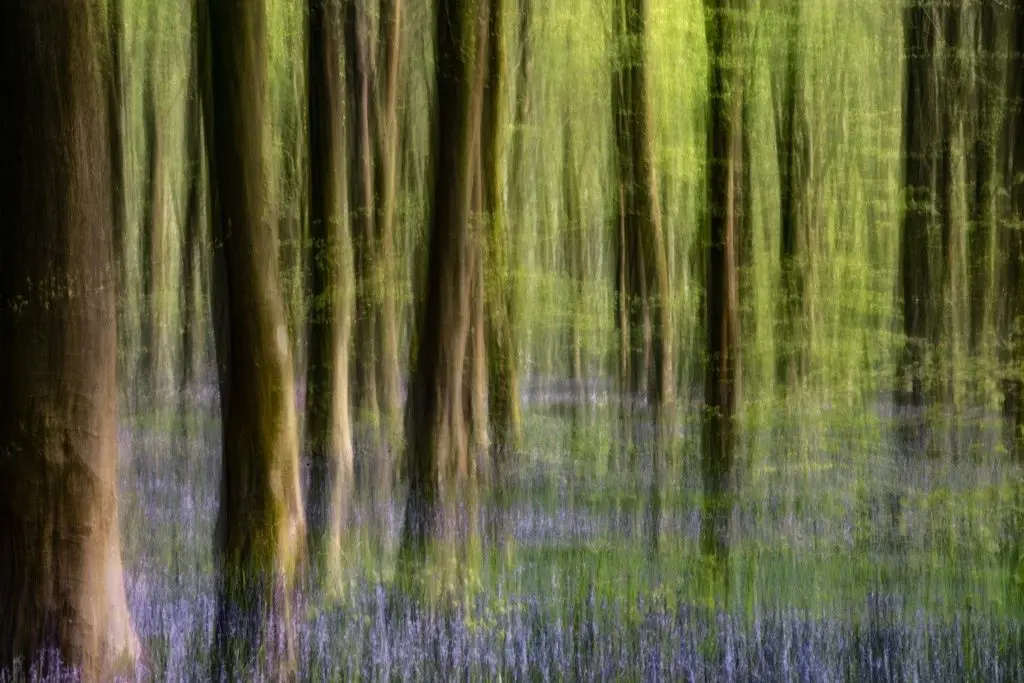
There are many types of photography that use special methods and one of those is Intentional Camera Movement Photography. In this article, we will look at how to use intentional camera movement for creative photography
What Is Intentional Camera Movement (ICM) Photography?
Generally, photography requires having the camera as still as possible and having the shutter speed at the right amount of time to capture sharp images. Photographers are always looking for ways to eliminate camera shake and motion blur in their images unless it is intentional.
But, is motion blur or camera shake a bad thing? Not if you are intending to use that for artistic or creative purposes.
Experimenting by slightly reducing the shutter speed than normal and then moving your camera when the shutter is open can produce interesting effects in photographs. You will be amazed at the creative results.
So, Intentional Camera Movement or ICM is a photographic technique where you use slightly slower shutter speeds and move the camera when the shutter is open. To start with, think of the panning technique, but not by tracking a moving subject, but by panning across a still scene like a landscape.
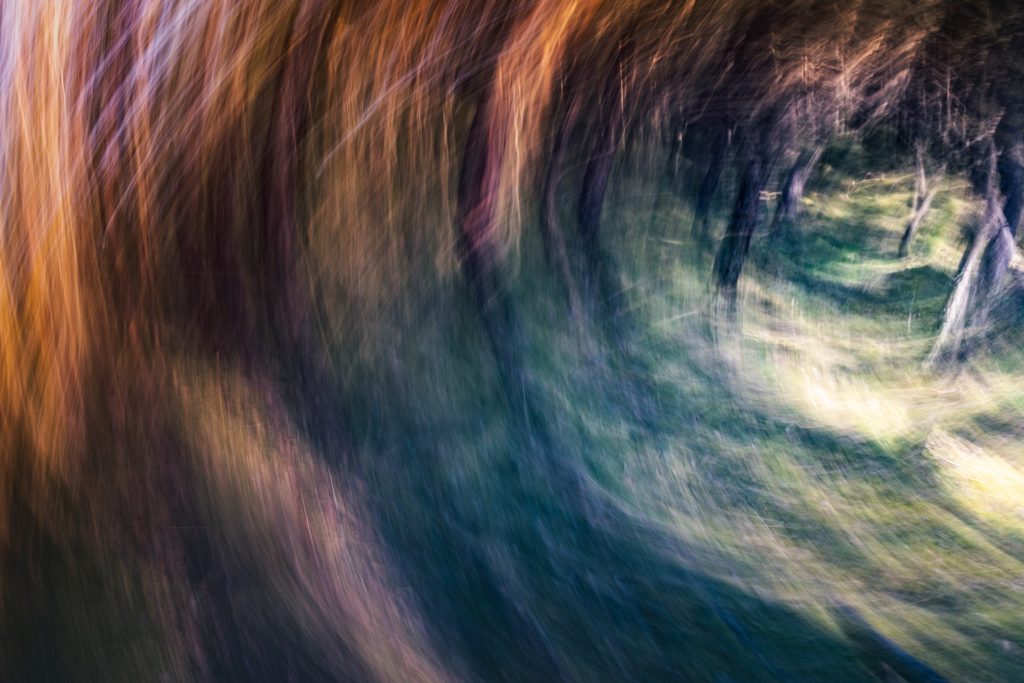
How Is Intentional Camera Movement Done in Photography?
In intentional camera movement (ICM), you are intentionally moving the camera along a path when the shutter is open. ICM is also a form of long exposure photography and hence you need to use a slow enough shutter speed that will allow for some movement to be recorded when the shutter is open.
There are no hard rules when it comes to ICM and there is no right or wrong settings. So experiment with your creativity and create brilliant abstract or artistic photos using ICM
Intentional Camera Movement Technique
ICM is a technique where the photographer is free to create what they have visualized. You are not focusing on the sharp details in a scene, but using the lines, colors, textures, contrast, etc., to create interesting images. By moving the camera, anything specific that stands out in a scene, for example, colors, textures, etc., become blended creating a smooth transition from one to another. The transition depends on what direction you move the camera and how fast you move and create a photograph that is abstract in nature.
When it comes to the technique for ICM, it greatly depends on the shutter speed and how fast or slow you are moving the camera. Both these factors contribute greatly to how the resulting image looks.
There are many ways in which the camera can be moved which we will discuss in a bit, and the technique is, to smoothly move along whichever direction without abrupt stops in between, so you get a smooth and seamless pattern in the resulting photograph.

Gear Or Equipment Required For Intentional Camera Movement
ICM is a technique that can be done with almost any gear that you have in hand. By that, we mean even a smartphone can be used, which we will be discussing later in this article. Here are some of the basic gear requirements for ICM photography.
Camera
You will need a camera that allows you to shoot in manual mode. This will help to have control over the exposure of the image. You need to manually adjust the shutter speed, aperture value, and iso values to get the best ICM shots.
Best Lens Or Focal Length For ICM
Any lens apart from an ultrawide lens can be good for ICM. We would recommend that you use focal lengths between 18mm to 135mm. Again this depends on what you are shooting and what results you are expecting.
Tripod Or Monopod
Using a tripod or not depends on what you are shooting and how long the exposure will be. If you have steady hands to shoot 1 to 2 seconds exposure, then, by all means, do it. Some may struggle with holding the camera steady when moving and so a tripod or monopod will help achieve smooth movements and avoid movements in undesirable directions. It would be helpful if you can have at least a monopod in hand for tricky situations.
Filters
Whatever time of the day you are shooting in, you will need a correctly exposed image after the long exposure. Times like golden hour, blue hour, night, heavily overcast days will be favorable, but bright daylight can be a problem for ICM. In these cases, it will be useful to have a couple of filters in your bag to control the amount of light entering the camera and reaching the sensor.
Here are some filters that would be helpful:
1. Circular Polarising Filter (CPL)
The first choice of filter to reduce the amount of light entering the camera slightly would be to use a polarising filter. If this does not help, and the light is still too bright, you can move on to using an ND filter.
2. Neutral Density (ND) Filter
A neutral density filter will be the best choice when the light is too bright in the scene. You can use a 2 stop or a 4 stop ND filter depending on the amount of light you need to cut off.

3. Graduated Neutral Density (GND) Filter
When using ND filters, there are times where there may be huge variations in light intensity between the sky and the landscape in the scene. If you are in a situation like that, it is best to use a graduated ND filter.
If you wish to know what filters can be used for different scenarios, here are a few detailed articles on these subjects:
- Polariser Vs ND Filter
- How To Use A Neutral Density Filter For Daytime Long Exposures
- How to Use Neutral Density Filters to Create Artistic Photos
Camera Settings For Intentional Camera Movement
Camera settings for ICM are similar to long exposure photography and here are the settings in general for ICM. These settings vary for different scenarios and the output you are looking to achieve, but you can try these as a start and then make adjustments depending on your visual interest.
1. Focus
In general, manual focus can be great for ICM photography. If you are shooting a landscape and are confident that you will get the focus in the right place, then you can use autofocus. For subjects at a closer distance, manual focus is the best way to go.
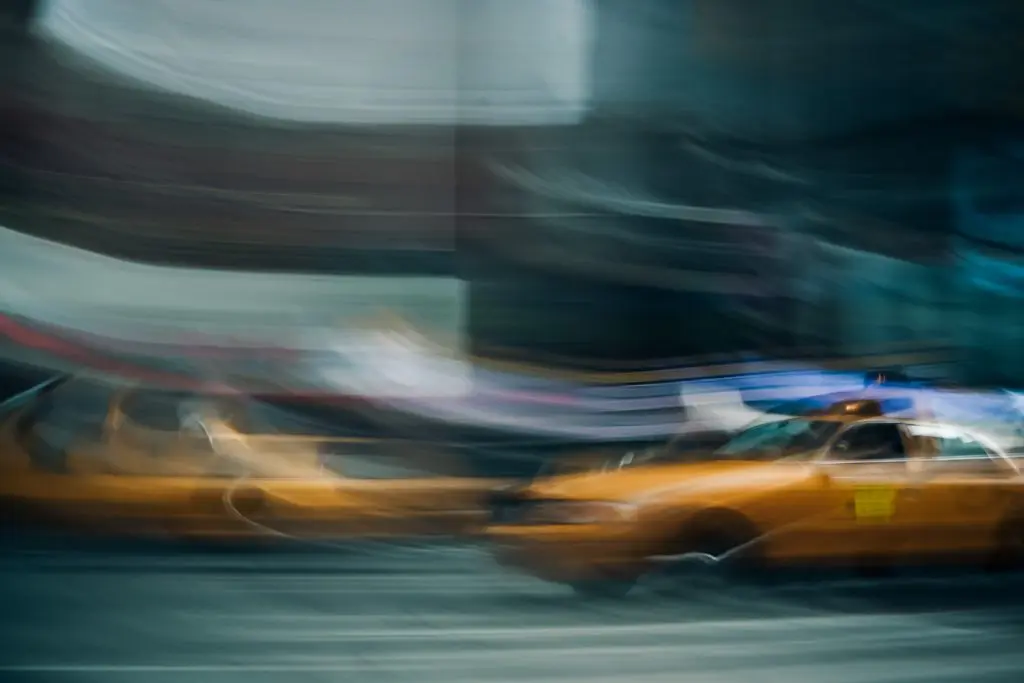
2. Shooting Mode
Set the camera to shoot in manual mode as this will give you full control over the exposure settings. Also, when the shutter speed is the main deciding factor for ICM, you can also try shooting in Shutter Priority Mode. Set the shutter speed to the desired value or about ⅕ to ½ of a second and then, the camera will take care of the other settings.
3. White Balance
Set the white balance depending on the light in the scene. You can use one of the presets in the camera or manually set the temperature manually if you are confident. If you are confused, leave it on auto and adjust it when post-processing. So make sure to shoot raw.
4. Metering Mode
There are quite a few metering modes that you can use in your camera. Matrix metering should work well for ICM, but if you are worried that a part of the scene is brighter than the rest, you can try center-weighted metering.
5. Shutter Speed
The most important setting that needs to be taken care of for ICM is the shutter speed. Your shutter needs to remain open long enough to capture blur when you move the camera. As we discussed previously, the resulting effect in ICM depends on the shutter speed and the speed with which you pan across a scene.
Choosing a particular shutter speed also depends on whether you are handholding your camera or using a tripod. Exposures like ⅕ of a second up to one or two seconds can be done handheld depending on how steady your hands are. In some cases of ICM, we do not want any other motion other than in the direction we are moving the camera. So for longer exposures, to get a smooth and seamless blend of the elements and colors in the scene, it is advised to use a tripod.
For a start, start with a shutter speed between 1/5s or 1/2s and practice ICM. Once you are confident, with the technique, try longer exposure times like 2 or 3 seconds. With longer exposure times, the textures start to smoothen off. Also keep in mind that for a given “shutter speed and speed of camera movement,” the blur is more for longer focal lengths, compared to wider focal lengths.
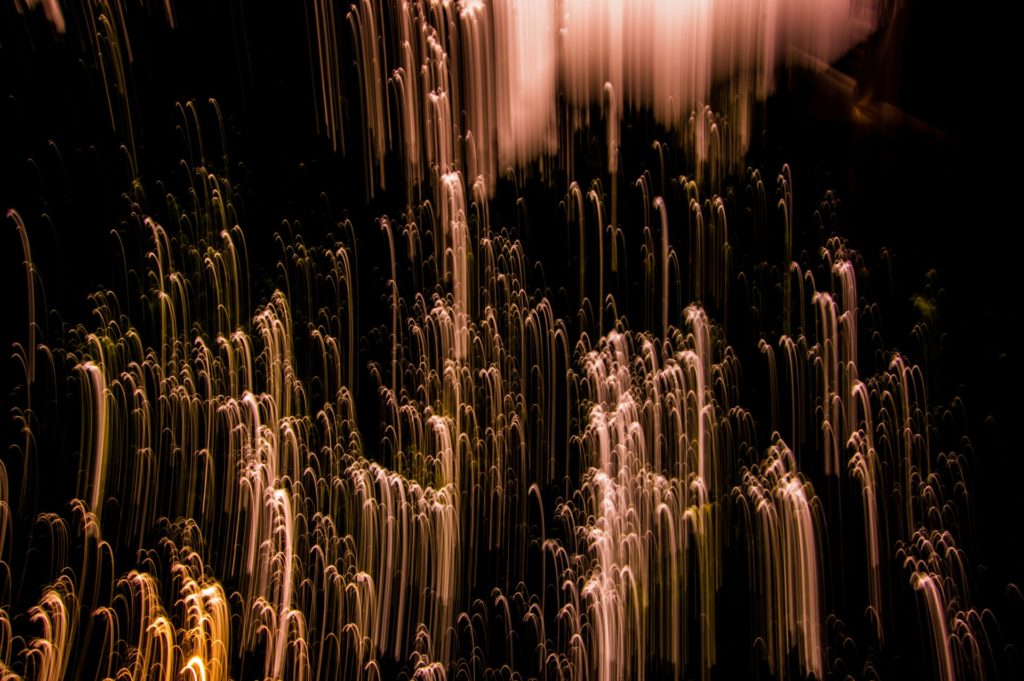
6. ISO
ISO is the sensitivity of the camera’s sensor to light. The higher the iso, the higher the sensitivity to light. So it is good to keep iso to the lowest possible. Set the iso to either 100 or 200 or the lowest your camera will allow, as it varies between cameras.
7. Aperture
It is good to use narrow aperture values because longer shutter speeds will let in a lot of light into the sensor. This could be f/22 or even f/32 depending on what the lens allows and your shutter speed. On a bright day or when the sun is high up in the sky, using the lowest iso and narrowest aperture will not help and you may need to use either a circular polarising filter or a neutral density filter depending on how high or low the light intensity is.
Time Of The Day
When it comes to shooting ICM, since we make use of longer shutter speeds, low light situations like the blue hour, golden hour or an overcast day are the best for ICM photography. If you are in a situation where the light is bright and you need to photograph using ICM, then try using a circular polarising filter first. If that doesn’t help, make use of a 2 or 4 stop ND filter depending on the available light in the scene.

Note: If using a polarising filter, you will get the best results when you use it at 90 degrees to the Sun. Moreover, polarising filters help to get rich colors and eliminate any unwanted glare and reflections in the scene that can cause highlighted streaks in the resulting image.
Handheld Or Tripod?
Hand holding the camera or using a tripod for ICM can be a personal choice depending on the exposure time and what you are looking to achieve. Using a tripod will help to avoid movements other than the direction of movement resulting in smoother straight lines. With handheld movements, you have the flexibility to position yourself at desired angles, perspectives and try various movements that may not be achievable when using a tripod.
ICM requires a lot of practice to master. So move the camera well enough to record visible movement rather than a slight movement which may look like a camera shake.
Camera Movements For Intentional Camera Movement
Once you are happy with the settings, try and take a few test shots to see how the images turn out. For a particular scene, a specific “shutter speed and camera movement speed” combination will work the best. Besides these, you will also need to decide in what direction and how you will be moving the camera when the shutter is open. Again, every scene and situation demands different approaches and it depends on your creative vision.
Here are some ways in which the camera can be moved for interesting ICM results.
1. Vertical And Horizontal Panning
You can pan the camera vertically or horizontally in a single smooth movement when the shutter is open. If you are looking for a smooth effect, you need to make sure that there are no up and down movements for horizontal movement and no left and right movement for vertical movement. Hold your camera at eye level with both hands, tuck your elbows in and swivel (turn) around. If you do not have steady hands, a tripod or monopod with a suitable head will help you achieve this.
If you are looking for a slightly wavy kind of output, then you can achieve that by hand holding the camera and shaking it slightly when panning, when the shutter is open. Also, try a back and forth movement if you think you have enough shutter speed to achieve this.

2. Diagonal Panning
Diagonal panning can also help achieve interesting images and most of the time you will need to achieve this when hand-holding the camera to get the desired output. You could try attaching the camera in a diagonal position on the tripod or monopod and check to see what you get!
3. Rotation
Besides linear movements, you can also try rotating the camera around an axis when the shutter is open. This rotation could be a full 360-degree rotation or a part of it depending on what you are looking to achieve. For perfect rotation around an axis, you will definitely need a tripod as this will not be achievable when holding the camera in hand.
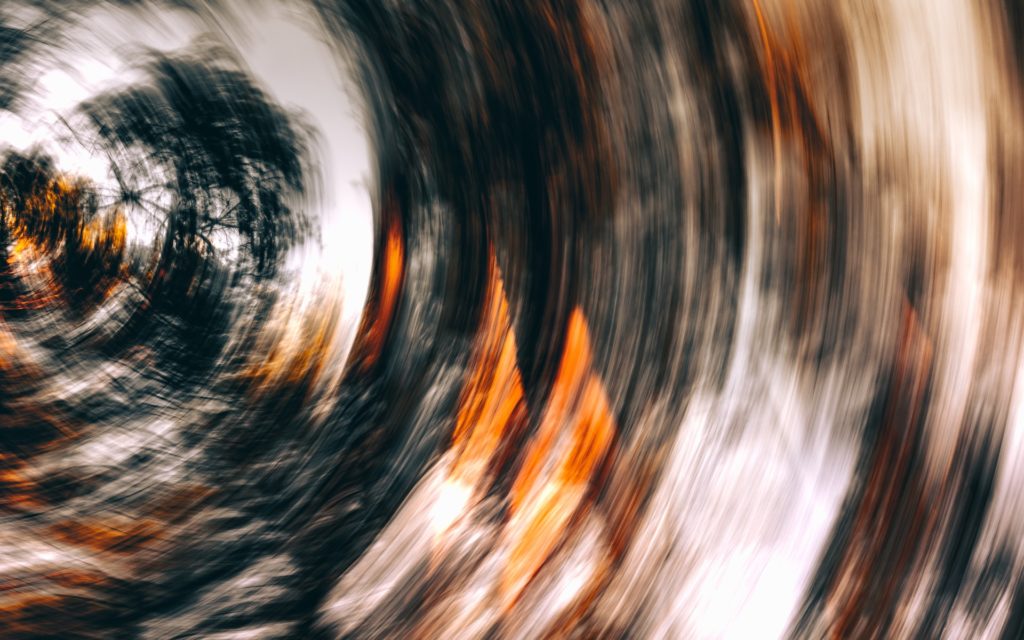
4. Zooming
For the zooming technique using intentional camera movement, you may need a glider on which you can move the camera towards or away from the scene when the shutter is open. The glider will help achieve a smooth effect. You could also try doing it yourself if you can move forward or backward with just one foot forward or backward when the shutter is open, to achieve a smooth desired result.
Another way to achieve a zoom effect is through using a zoom lens where you can zoom in or out of the scene when the shutter is open.

5. Freestyle
As the name suggests, in freestyle, you can move the camera in any desired direction, but in a meaningful and artistic way, so you get creative photographs.

6. Stop And Pan
The stop and pan method can give some interesting results if you have one subject in the scene that you need in focus. This can help create stories using intentional camera movement.
For this method, focus on the main subject manually, release the shutter and stay in that position focused on the subject for a fraction of a second, and then pan. You can do this once or as many times as you wish – pan then stop, pan again, then stop, etc.
You could also pan, stop for a fraction of a second, and then pan. Each of these methods will give a different effect. Be creative and work on your own style.
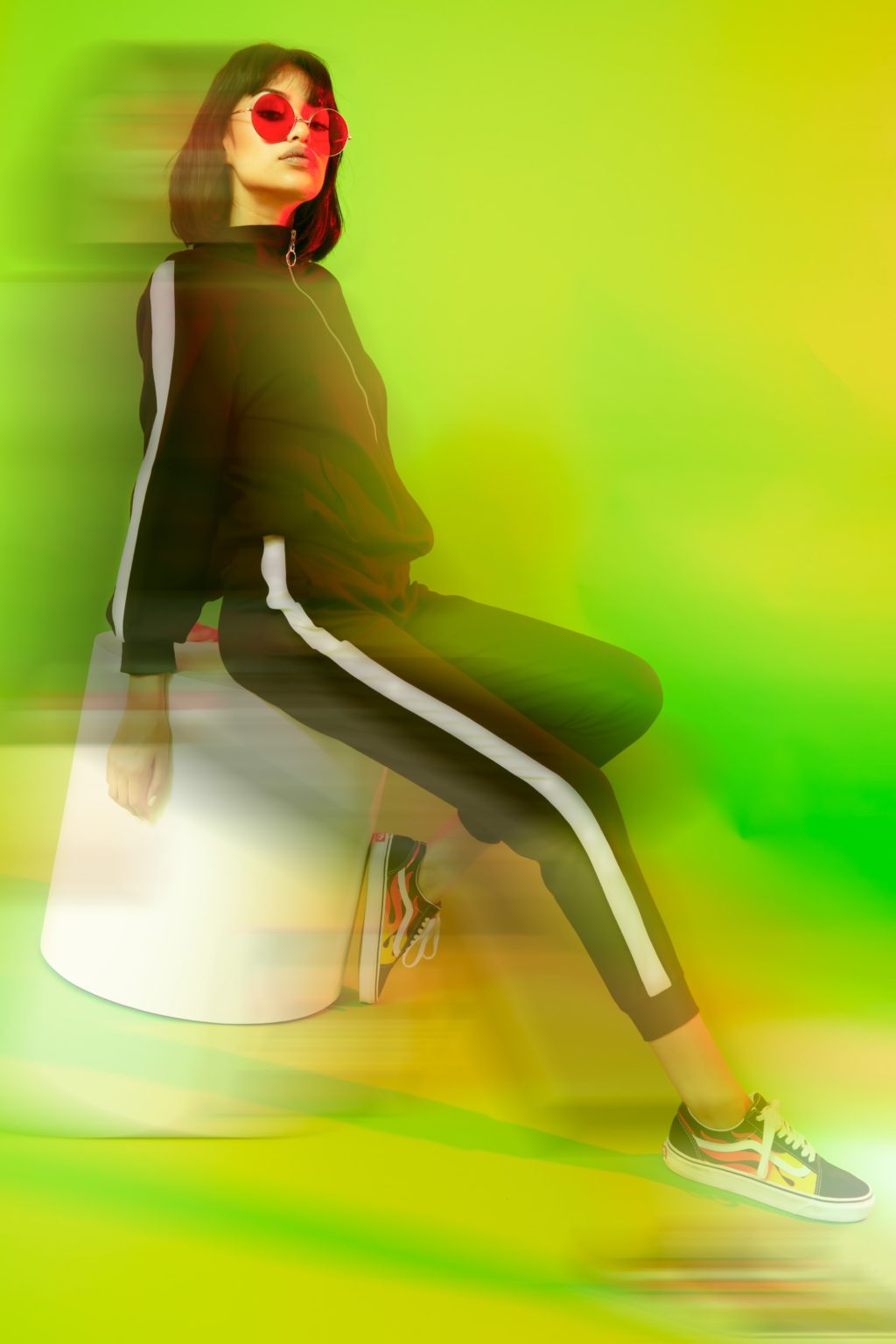
7. Panning At Different Speeds
The speed with which you pan or move your camera can also have a considerable effect on the resulting images. Shoot a particular scene using different speeds when moving the camera and see what looks or works the best.
8. Shoot From A Moving Vehicle
This is another interesting way to shoot ICM photographs. Shoot images from a moving car or other vehicles. The settings are similar to the above movements and the only difference is that the car is moving your camera. On a very important note, do this only from the passenger seat after taking all the safety measures for yourself, others, and the camera.
9. Combination Of Two Or More Of The Above
Once you are confident with the techniques above, take your ICM photos to the next level by combining one or two methods above. It could be zoom and pan, rotate and zoom, etc.
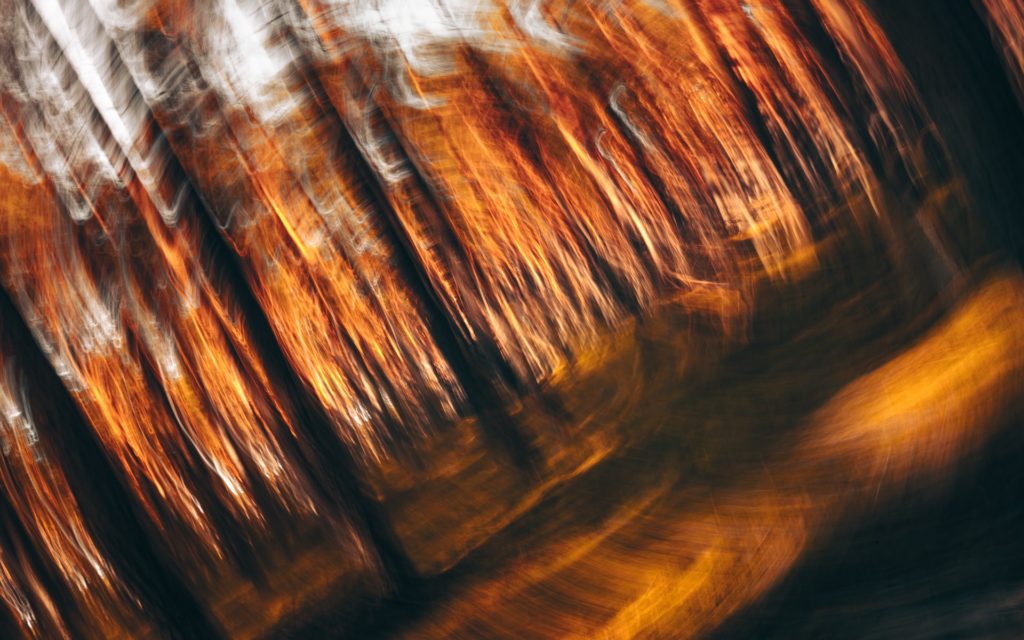
Note: All these movements above can be done fast or slow depending on the effect you are looking to achieve.
Interesting Subjects For Intentional Camera Movement Photography
You can shoot anything and everything using the ICM technique and shooting it creatively matters a lot and requires quite some planning. Here are some suggestions for subjects that are best for ICM:
- Look for scenes like landscapes, meadows, fields, etc., that have contrasting and striking colours.
- Look for interesting patterns, shapes, light and shadows as these can contribute to interesting ICM photos.
- Spring and autumn seasons can be the best for shooting ICM landscapes.
- Look for beaches and seascapes especially during the golden hour and blue hour, so you can capture the rich colour palettes in a beautiful way. This can be good for horizontal ICM photos.

- You can also try ICM with the waves crashing on the shore. Be sure to include interesting colours in the scene and to keep the camera safe from salt water.
- Jungles and forests can be interesting locations especially for vertical ICM photographs. The can evoke a mysterious mood in the resulting photo.
- Night lights in the city can also help to create interesting ICMs. If it is a busy street or streets with some activity, it can help to create a ghost or haunted effect. Watch out for any bright lights and avoid them in the frame as they can create bright highlighted streaks and ruin the photo.
- You can also shoot still life, flowers, toys to get semi abstract images. Using the pan and stop or zoom methods can be a great way to create interesting and fun shots.
- Even at times when you do not go out for ICM photography, if you find an interesting subject that will be a good candidate for ICM, then capture it.
- Be creative and use human elements wisely in ICM images.

Backgrounds For Intentional Camera Movement
When choosing backgrounds for intentional camera movement, especially when you have one or more subjects in the frame, look for contrast and interesting colors. All these matters for interesting images that have some depth.
When choosing colors, look for contrasting or complementary colors, so you can create contrast and interest in the photograph. Also, look for variations in tones and light intensity. This will help to create an ICM photograph that has good depth and mood.
Textures and geometrical patterns are other interesting factors that can be incorporated in ICM. These can result in images that have soft textures and variations in the image.
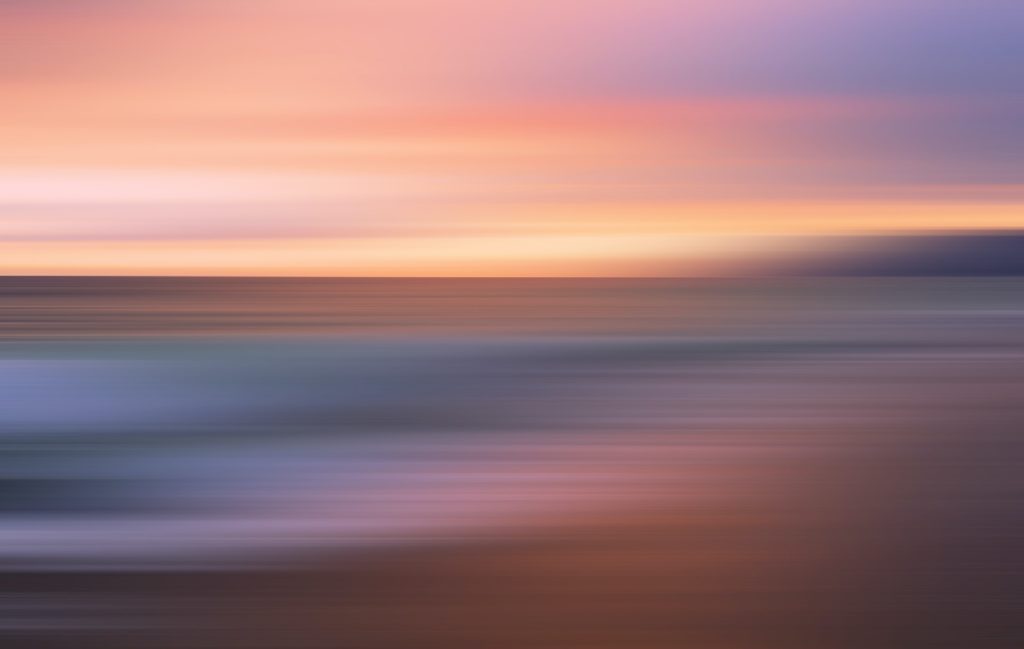
ICM Using A Smartphone
If you are wondering if you can do ICM using a smartphone, the answer is yes. As with the camera, you need long exposure times and during the long shutter speed just move the phone camera in the intended speed and direction. You can attach the phone to a tripod if you wish to.
Most native camera apps for smartphones come with options for long exposure, but if you do not have that feature in your phone, there are apps that can help you shoot ICM photographs using a smartphone – it can be an iPhone or an Android phone.

Here are some apps that will help you shoot ICM using a smartphone:
1. Slow Shutter Cam
This app allows for photographing creative long exposure images including ICM shots using a smartphone. This app is paid and is available for iOS.
2. Camera+ 2
This is another paid app for iOS and the slow shutter preset will help you capture long exposure images so you can make ICM photographs as well.
3. ProCamera
This app for iOS is again paid and the manual settings will allow you to use longer shutter speeds to capture ICM images.
4. Camera FV-5 Lite
This app allows users to set exposure values manually just as you would do in a DSLR or any camera that allows for manual settings. This app is free and is available for Android.
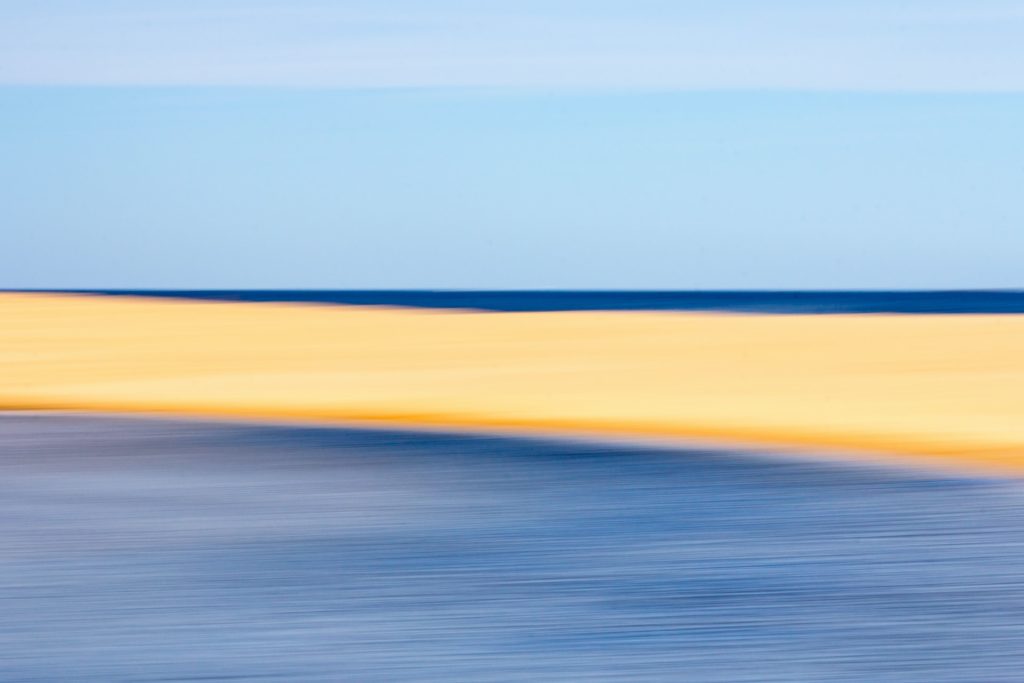
Tips For Successful Intentional Camera Movement
- Burst mode can help seamlessly take a few shots across a scene. You can choose the best later.
- ICM involves trial and error for different scenes and lighting conditions and with practice, you will get an idea of what works best for a scene.
- When starting ICM you will be getting random effects on the screen. Some you may like and some you may not. If there is something that isn’t quite like what you envisioned, do not delete, but come back to it later. Moreover, these images will help you to improve and learn what speed and direction of movements yield what kind of results.
- Avoid strong highlights or light spots in the frame as these can create bright stripes that look awkward and can be distracting in the frame.
- Be creative and enjoy the process. You can photograph landscapes and other subjects the way you never thought was possible before.
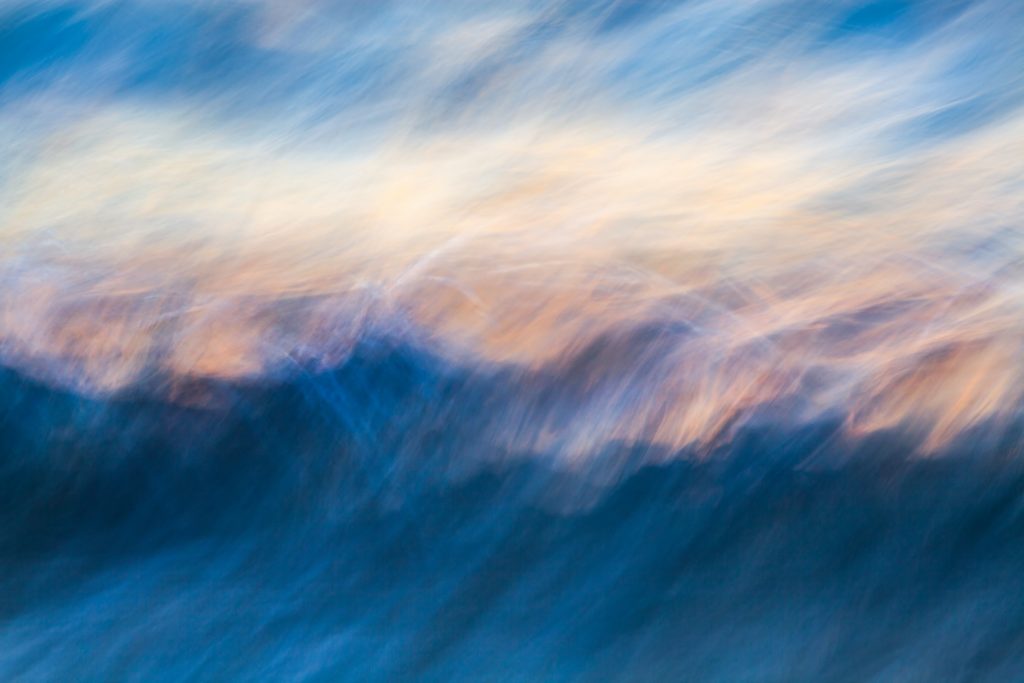
Intentional camera movement can be a fun and addictive type of photography. Practice a lot and take a lot of shots in each location with different types of camera movements, different speeds in camera movement, and different shutter speeds.
Have you tried ICM before? What are some tips and techniques that you followed? Please share your experience and tips in the comments section below. We would love to know!




